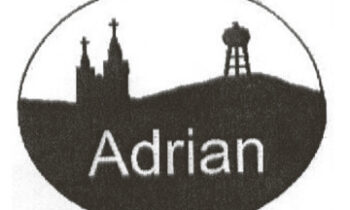An open house to share the designs of the three Highway 60 intersections in Heron Lake was held Monday, March 26 at the Heron Lake Community Center.
The Highway 60 intersections that are included in the safety improvement project include Tenth Street (Jackson County Road 9), Jackson County Road 24 and First Street. The improvements to be built in 2019 include constructing three J-turns, known as Reduced Conflict Intersections (RCIs). The entire cost for these projects will be covered by the Minnesota Department of Transportation (MnDOT).
Scott Thompson, MnDOT Traffic Engineer, gave a short presentation, explaining the RCIs as well as historical reasons behind the changes that will be made in 2019.
With RCIs, there is no change to through traffic on Highway 60, or anyone desiring to turn into town. Traffic on the side streets wishing to cross or access Highway 60 will be changed. Drivers are required to make the intersection crossing in two stages, rather than going straight across.
A driver leaving Heron Lake to go north on County Road 9 will wait for an opening in traffic from the near two lanes, make a right turn onto Highway 60, cross over into a dedicated left turn lane (about 700 feet long), and then yield, waiting for an opening in the other two lanes of traffic, before turning onto 60. They then enter the right turn lane to continue on County Road 9 (or they may continue straight on 60).
The same will be required to go south into Heron Lake at County Road 9, in addition to crossing the Highway at the County Road 24 and First Avenue (to Schumachers Berry Farm and the ball field) intersections.
Still to be finalized is the final plan for the First Avenue intersection. Options show either a one turn RCI, in order
to go back into town from the ball field, or a two turn option, similar to the other two intersections.
Over the past ten years, there have been a number of right angle crashes at the Tenth Avenue/County Road 9 and Highway 60 intersection. Most of them have taken place in the far lanes, as drivers seem to be attempting to cross the intersection in one movement. Two of the crashes have resulted in three fatalities, with additional serious injury crashes reported.
“We want to make it safe for the future,” Thompson explained. With the Highway 60 four-lane project being completed soon, increased traffic will likely result. Additional safety features have been added over the past ten years, included LED enhanced stop signs after the first fatality and LED yield signs in the median.
MnDOT, Jackson County and the City of Heron Lake have met and discussed possible options in late 2016 and early 2017. Then came Easter weekend of 2017, when four separate accidents occurred at the intersection. “It’s a safety issue,” Thompson pointed out.
Various options had been discussed including lowering the speed limit, additional signage, RICWS and RCIs or J-turns. Thompson gave statistics that showed lowering the speed doesn’t significantly reduce speed of the drivers. Signage, including the RICWS (warning signs of incoming traffic) become part of the scenery and are ignored. RICWS is still experimental, and Thompson pointed out that there has actually been an increase in the number of crashes at Mountain Lake where such signs are in place.
Only addressing the problem at the Tenth Street intersection could result in the problem being relocated to the other intersections that serve Heron Lake, which is why all three intersections are being treated by MnDOT.
RCIs are faster to build and a fraction of the cost of building an interchange. They offer improved safety, with the 13 RCIs in the state of Minnesota having no fatalities or serious crashes reported since their installation. Injury crashes have been reduced by 50% with total crashes down 15%.
The final design for the project is being prepared, with residents able to make suggestions on Monday evening. Several residents inquired about the reasoning, as well as questioning the need for treating all three intersections. Thompson pointed out the safety issue again, stressing that if only one intersection was changed, the crash problem could move to the other intersections.
Other inquiries regarding semi-truck and agricultural equipment traffic. With the RCIs, there is nearly 700 feet of a dedicated lane where trucks and equipment can stage prior to completing their turns, Thompson pointed out.
Cost of the project is expected to be about $4 million, and at least one access to Heron Lake will be open at all times.
The project design layout and more information on Reduced Conflict Intersections can be found at www.mndot.gov/d7/projects/hwy60heronlake/.






